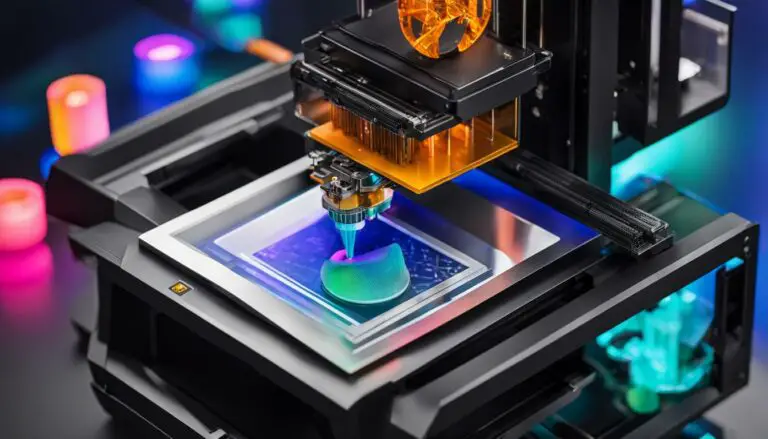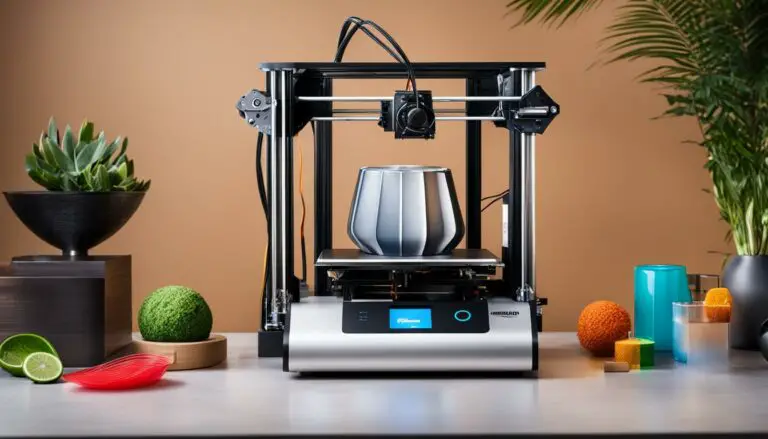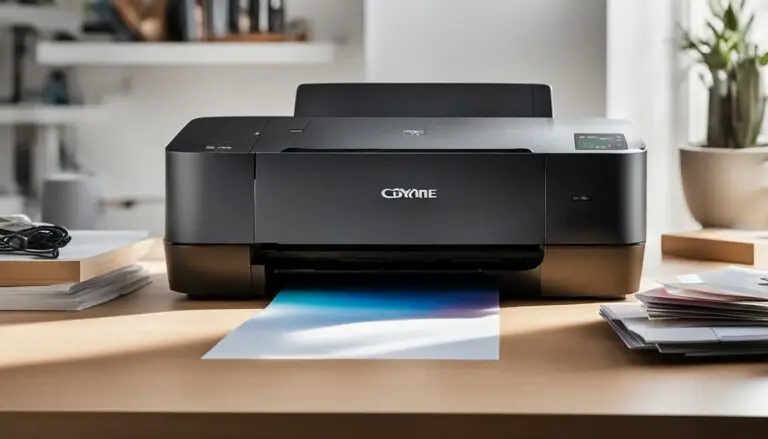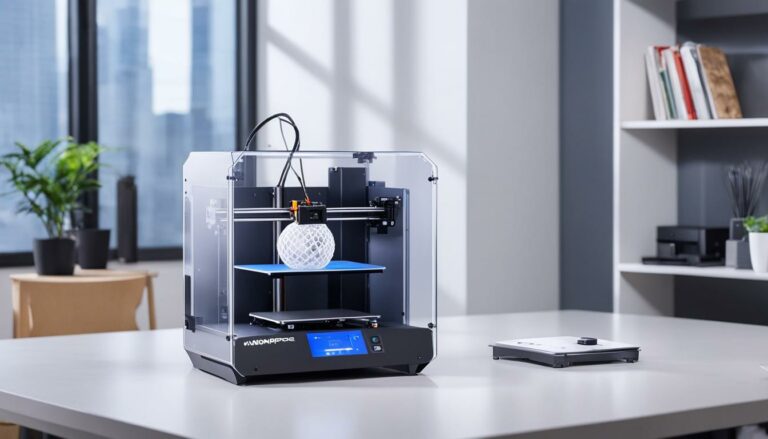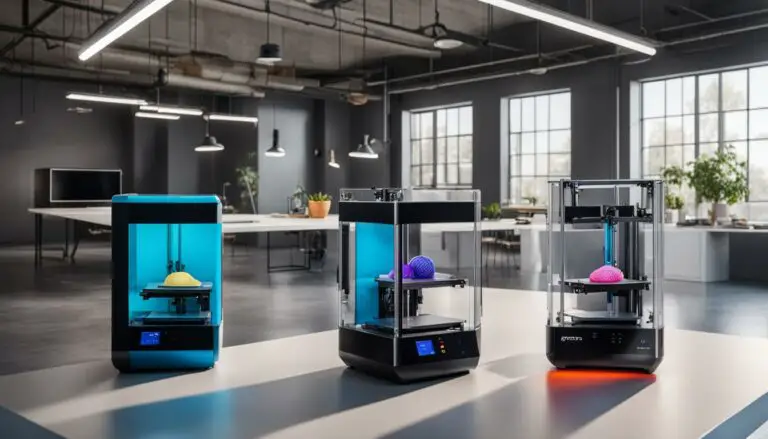Mastering 3D Pen PLA Bonding Techniques
Originally posted on January 7, 2024 @ 2:19 pm
Please be welcomed to our comprehensive manual on mastering PLA bonding with a 3D pen. With the continuous evolution of 3D printing, the potential for constructing larger and more intricate objects has become achievable. However, joining these components can pose difficulties. This is where PLA bonding comes into play.
PLA bonding is the process of creating strong and seamless connections between different PLA parts. By using the right techniques and adhesives, you can achieve a bond that is not only sturdy but also visually appealing. In this article, we will explore various methods for PLA bonding and provide you with tips and tricks for successful bonding.
Key Takeaways:
- Gluing 3D printed parts can be challenging, but with the right techniques and adhesives, strong and seamless bonding is achievable.
- Methods for PLA bonding include super glue, acetone, epoxy resin, polyurethane and silicone adhesives, hot glue gun, and even using a 3D pen.
- Proper surface preparation is crucial for successful bonding, and safety precautions should be followed when working with adhesives.
- Experimentation and testing may be necessary to find the best bonding technique for your specific projects.
- Choose the bonding method that best suits your project requirements and the materials being bonded.
Super Glue for PLA Bonding
When it comes to bonding PLA parts, super glue is a go-to choice for many makers. Also known as cyanoacrylate, super glue offers several advantages that make it a popular option. It is easy to use, hardens quickly, and can create strong connections with almost invisible seams. Whether you’re joining small intricate pieces or larger parts, super glue can provide a reliable bond that withstands stress and provides a seamless finish.
However, it’s essential to consider the characteristics of super glue before using it for PLA bonding. Super glue is not suitable for bonding flexible materials, so keep that in mind when working with PLA parts that require some flexibility. Additionally, proper surface preparation is crucial for successful bonding with super glue. Make sure to clean and smooth the bonding surfaces to ensure maximum adhesion.
When working with super glue, it’s important to take safety precautions due to its fast-setting nature. Avoid contact with skin and eyes, and work in a well-ventilated area to minimize exposure to fumes. Use the adhesive sparingly, as a little goes a long way, and be prepared to work quickly once the glue is applied.
Super glue is a reliable choice for bonding PLA parts due to its ease of use, quick hardening, and strong bond. However, proper surface preparation and safety precautions are crucial for successful bonding.
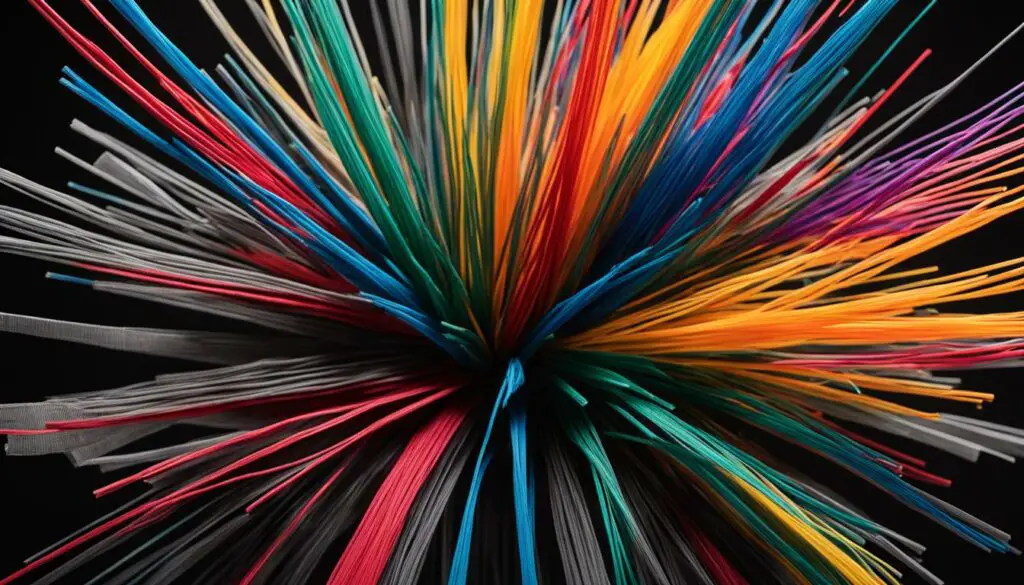
| Pros of Super Glue for PLA Bonding | Cons of Super Glue for PLA Bonding |
|---|---|
| Easy to use | Not suitable for flexible materials |
| Hardens quickly | Fumes can be irritating |
| Creates strong connections with almost invisible seams | Requires proper surface preparation |
| Not recommended for applications that require a flexible bond |
When using super glue for PLA bonding, it’s important to remember that less is more. Applying a thin, even layer of glue on the bonding surfaces will ensure optimal adhesion and prevent excess glue from seeping out. It’s also wise to hold the bonded parts firmly in place until the glue fully cures, which typically takes a few minutes.
Acetone for PLA Bonding
When it comes to bonding PLA parts, acetone can be a game-changer, especially for those made of ABS or HIPS. This powerful solvent has the ability to dilute a thin layer of the surface, which then seamlessly “mixes” with the other part during bonding. The result is a strong connection that appears seamless to the naked eye.
Using acetone for PLA bonding does require some precautions. Due to its flammability and volatility, it is important to work in a well-ventilated area and follow safety guidelines. Additionally, surface preparation is crucial for successful bonding. Make sure to clean and smooth the surfaces before applying acetone.
Invisible seams and a strong bond are the hallmarks of acetone PLA bonding.
Acetone is an effective method for achieving reliable and robust PLA bonding. Its ability to fuse the parts together creates a seamless finish, making it ideal for projects where aesthetics matter. However, it is worth noting that acetone is not suitable for all PLA parts. It is most effective for ABS or HIPS materials.
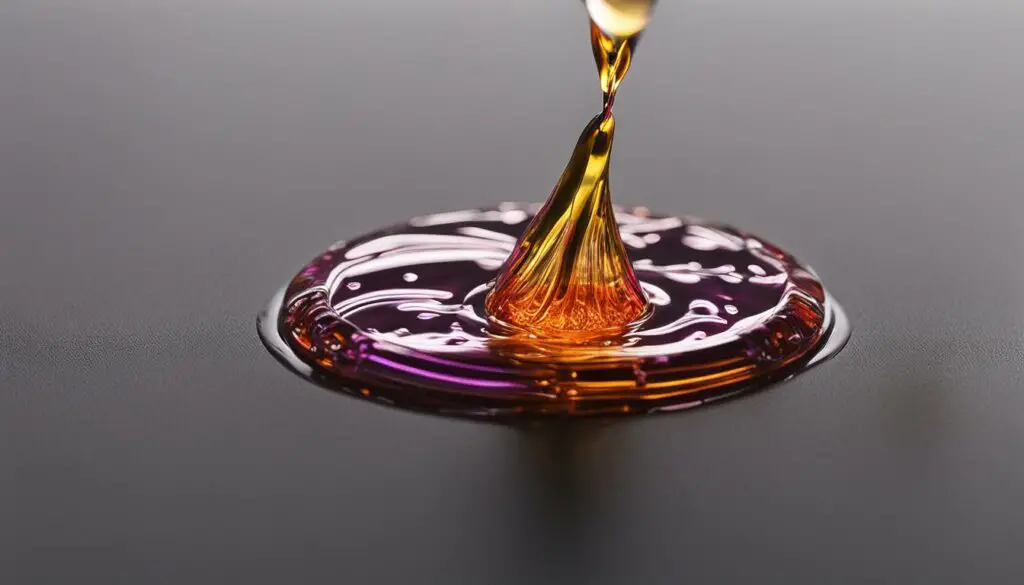
Why Choose Acetone for PLA Bonding?
Acetone PLA bonding offers several advantages:
- Strong bond: Acetone creates a powerful bond between PLA parts, ensuring durability and reliability in your designs.
- Invisible seams: The fusion created by acetone bonding results in virtually invisible seams, enhancing the overall aesthetics of your 3D printed parts.
- Quick and easy: Acetone bonding is a straightforward process that requires minimal effort and time.
- Wide availability: Acetone is easily accessible and can be found in most hardware stores.
When working with acetone, it is crucial to follow safety guidelines to protect yourself and your workspace. Always use acetone in a well-ventilated area and avoid prolonged exposure to the fumes. Additionally, remember to handle acetone with care due to its flammable nature.
Epoxy Resin for PLA Bonding
Epoxy resin is a versatile adhesive that can be used for bonding PLA. It offers excellent adhesion and can create strong and durable bonds between PLA parts. Additionally, epoxy resin can also act as a filler, helping to fill in gaps and hide layer lines, resulting in a smoother and more seamless finish.
Using epoxy resin for PLA bonding does require more effort in terms of mixing and application compared to other methods. Epoxy resin typically comes in two separate components – the resin and the hardener. These components need to be mixed in the correct ratio to ensure proper curing.
After mixing the epoxy resin, apply it to the bonding surfaces of the PLA parts. Ensure that the surfaces are clean and free from dust or debris for optimal bonding. Once the epoxy resin is applied, properly fix the parts together and hold them in place until the resin cures. The curing time can vary depending on the brand and type of epoxy resin used, so refer to the manufacturer’s instructions.
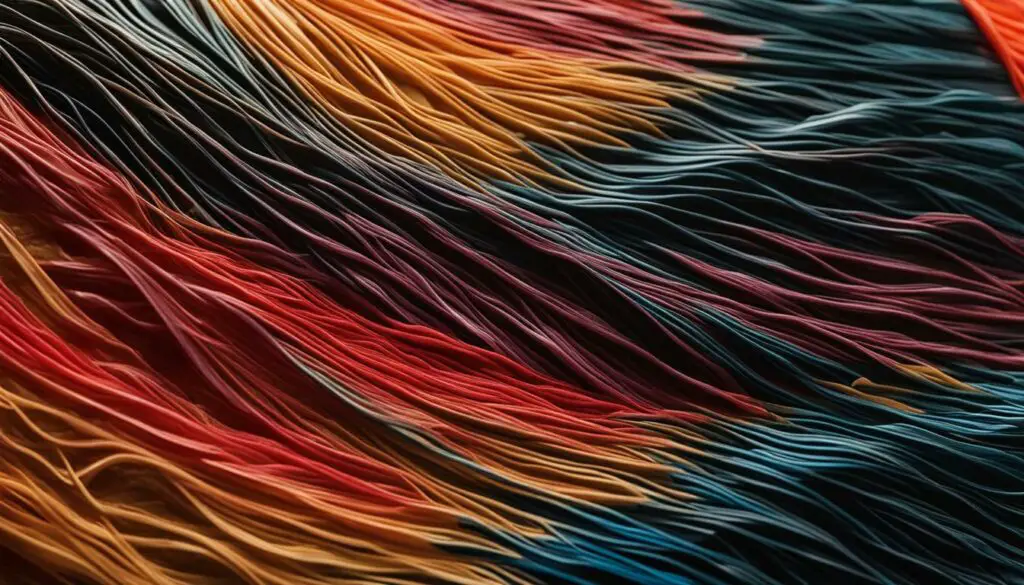
Once the epoxy resin has fully cured, it forms a strong and durable bond between the PLA parts. The hardened resin can be sanded and painted to achieve a finished look that seamlessly blends with the surrounding PLA material.
Epoxy resin is a popular choice for bonding PLA due to its versatility and ability to act as a filler. It is commonly used in various applications, including model making, prototyping, and DIY projects that require strong and aesthetically pleasing bonds between PLA parts.
Polyurethane and Silicone Adhesives for PLA Bonding
When it comes to bonding PLA parts, polyurethane (PU) and silicone adhesives are excellent choices. Not only are they easy to use, but they also create strong and reliable bonds for your 3D printed projects. Whether you’re working on prototypes, functional parts, or artistic creations, these adhesives can help you achieve seamless and durable connections.
Why Choose Polyurethane Adhesive?
Polyurethane adhesive is known for its fast initial strength and excellent bonding capabilities. It forms a robust bond that can withstand various stresses, ensuring the longevity of your PLA creations. This adhesive works especially well on thicker parts where a certain thickness is necessary for proper bonding. With its reliable and fast-acting properties, polyurethane adhesive is a top choice for bonding PLA materials.
The Benefits of Silicone Adhesive
Silicone adhesive, on the other hand, offers a unique set of advantages for PLA bonding. While it may take longer to fully cure compared to polyurethane adhesive, silicone adhesive provides flexibility and resilience to your bonded parts. It can absorb vibrations and movements, making it ideal for applications where PLA parts may experience stress or frequent use. Silicone adhesive is also highly resistant to moisture, heat, and chemicals, ensuring the durability of your PLA projects.
| Polyurethane Adhesive | Silicone Adhesive |
|---|---|
| Fast initial strength | Flexibility and resilience |
| Works on thicker parts | Moisture, heat, and chemical resistance |
| Durable and long-lasting bonds | Can absorb vibrations and movements |
It is important to note that both polyurethane and silicone adhesives come in various types and formulations, each with its own unique characteristics. We recommend testing your chosen adhesive before applying it to your PLA bonding projects to ensure optimal results.
Summary
In summary, polyurethane and silicone adhesives are reliable options for bonding PLA materials. Polyurethane adhesive offers fast initial strength and is suitable for thicker parts, while silicone adhesive provides flexibility and resilience for bonded parts. Both adhesives create strong and durable connections, ensuring the longevity of your PLA projects.
![]()
Hot Glue Gun for PLA Bonding
A hot glue gun can be a convenient alternative for bonding PLA parts. It offers quick and easy application, making it a popular choice for various projects. While the bond created by a hot glue gun may not be as strong as other methods, it can still provide sufficient adhesion for many applications.
One important consideration when using a hot glue gun is that the applied glue will be visible. Therefore, it may not be suitable for projects where aesthetics are a primary concern. However, if the appearance is not the main focus, a hot glue gun can provide a fast and effective bonding solution.
When using a hot glue gun for PLA bonding, you have the option to use either standard hot glue sticks or specially designed 3D printed PLA sticks. Both options can create a strong bond, so choose the one that best fits your project requirements.
Like with any bonding method, proper surface preparation is essential for successful adhesion when using a hot glue gun. Make sure to clean and smooth the bonding surfaces before applying the glue to ensure maximum effectiveness.
“A hot glue gun offers a quick and easy bonding solution for PLA parts.” – Expert in PLA bonding techniques
Advantages of Hot Glue Gun for PLA Bonding:
- Quick and easy application
- Strong bond for a variety of applications
- Option to use either standard hot glue sticks or 3D printed PLA sticks
- Does not require extensive mixing or curing time
Conclusion
PLA bonding techniques are crucial for creating larger or more complex 3D printed parts. When choosing a bonding method, consider the specific project requirements and the materials you are working with. Super glue, acetone, epoxy resin, polyurethane and silicone adhesives, hot glue guns, and even 3D pens are all effective options for bonding PLA.
Proper surface preparation is key to achieving successful PLA bonding. Ensure that the surfaces are clean and smooth before applying any adhesive. Safety precautions should also be followed when working with adhesives, such as wearing protective gloves and working in a well-ventilated area.
Experimentation and testing may be necessary to determine the best bonding technique for your specific projects. It’s important to find the method that provides the strongest and most seamless bond for your PLA parts. With the right bonding technique, you can create durable and visually pleasing 3D printed objects.
FAQ
What are some methods for bonding PLA with a 3D pen?
PLA can be bonded using a 3D pen by heating the filament and applying it to the bonding surfaces. The melted PLA acts as an adhesive, creating a strong connection between the parts.
Can super glue be used for bonding PLA parts?
Yes, super glue, also known as cyanoacrylate, is a popular choice for bonding PLA parts. It creates strong connections with almost invisible seams, but it is not suitable for flexible materials.
How can acetone be used to bond PLA parts?
Acetone can be used to bond PLA parts, especially those made of ABS or HIPS. It works by diluting a thin layer of the surface, which then “mixes” with the other part during bonding. Acetone bonding provides a strong connection with an invisible seam.
What is epoxy resin, and how can it be used for PLA bonding?
Epoxy resin is a versatile adhesive that can be used for bonding PLA. It can also act as a filler to fill gaps and hide layers. Epoxy resin requires more effort in terms of mixing and application compared to other methods. It usually comes in two separate components that need to be mixed in a specific ratio. After applying the mixed epoxy resin to the bonding surfaces, the parts should be properly fixed until the resin cures, which can take varying amounts of time.
Are polyurethane and silicone adhesives suitable for PLA bonding?
Yes, polyurethane (PU) and silicone adhesives are easy to use and create strong bonds for PLA. They work best on thicker parts due to their need for a certain thickness for proper bonding. PU adhesives have a fast initial strength, while silicone adhesives take longer to fully cure.
Can a hot glue gun be used for bonding PLA parts?
Yes, a hot glue gun can be a convenient alternative for bonding PLA parts. While the bond may not be as strong as other methods, it is quick and easy to use. Proper surface preparation is necessary for successful bonding with a hot glue gun.
What should I consider when choosing a PLA bonding method?
When choosing a PLA bonding method, consider the specific project requirements, the materials being bonded, and the desired strength and flexibility of the bond. The choice of method will also depend on factors such as visibility of the bond, curing time, and ease of use.


